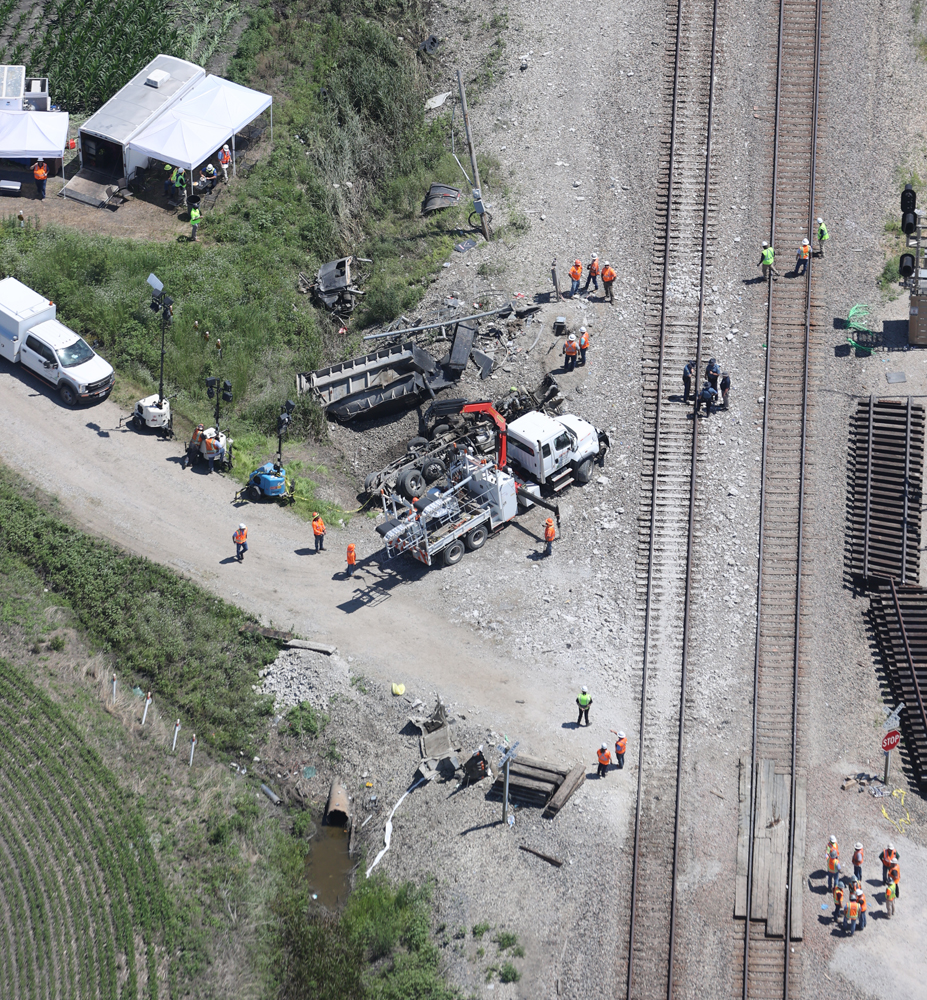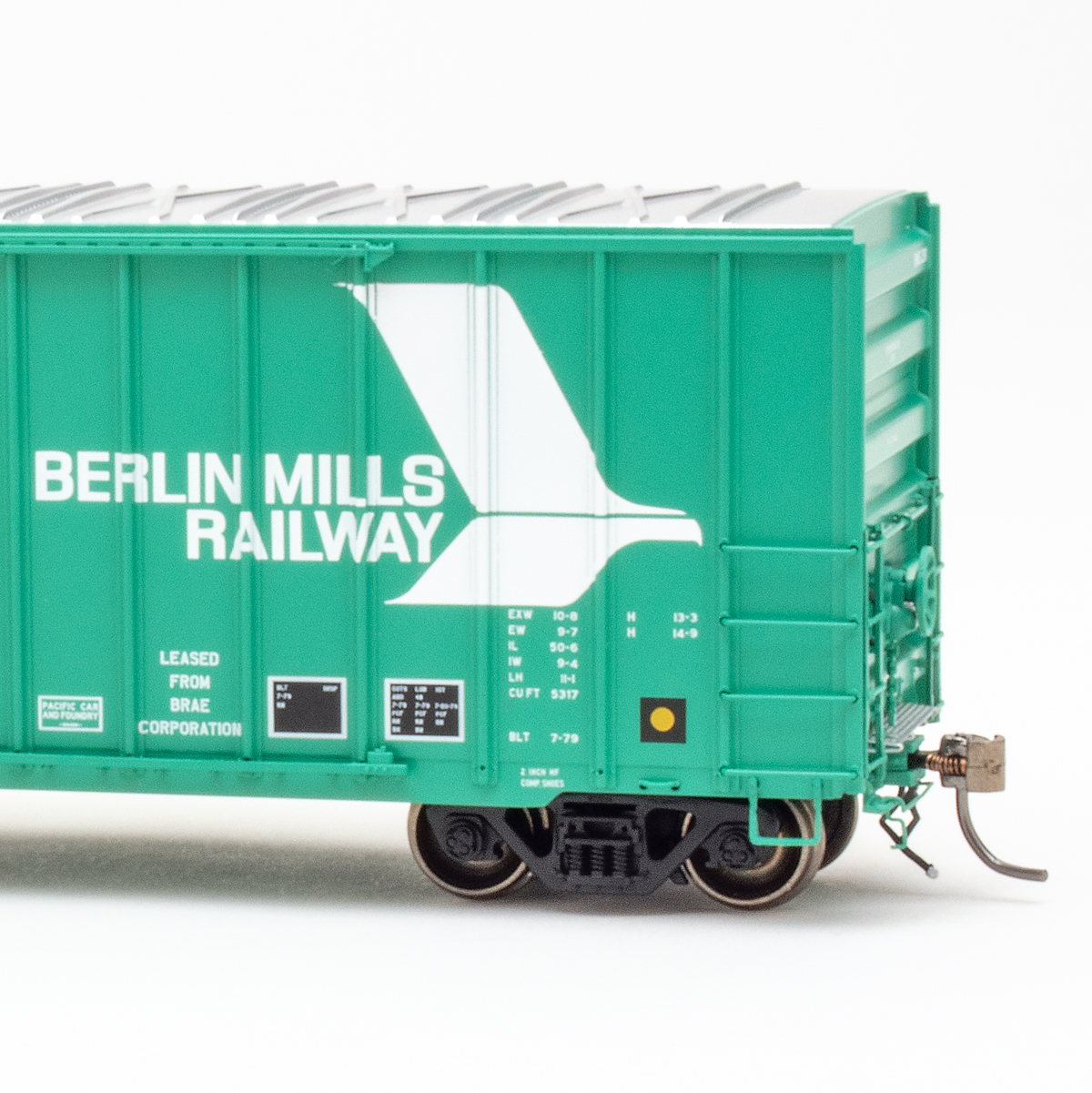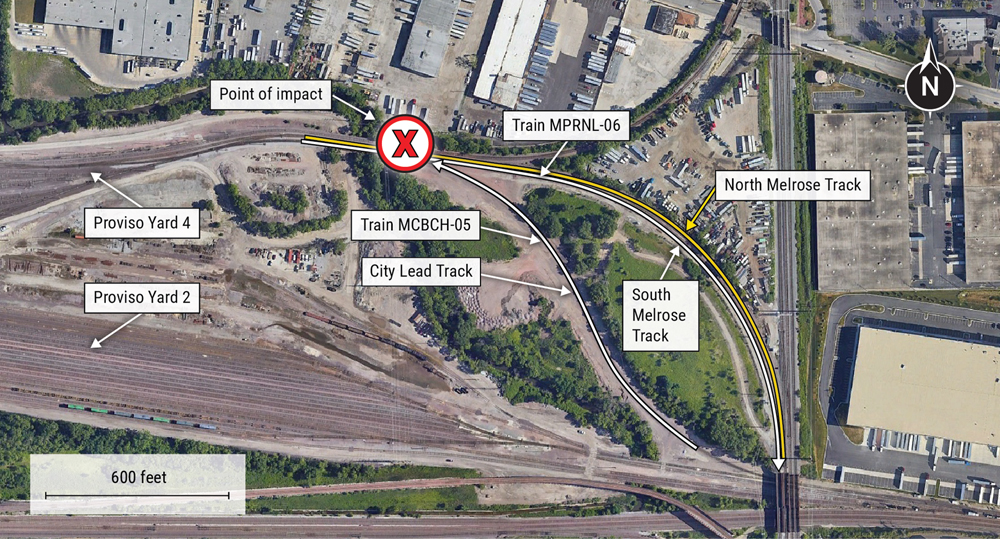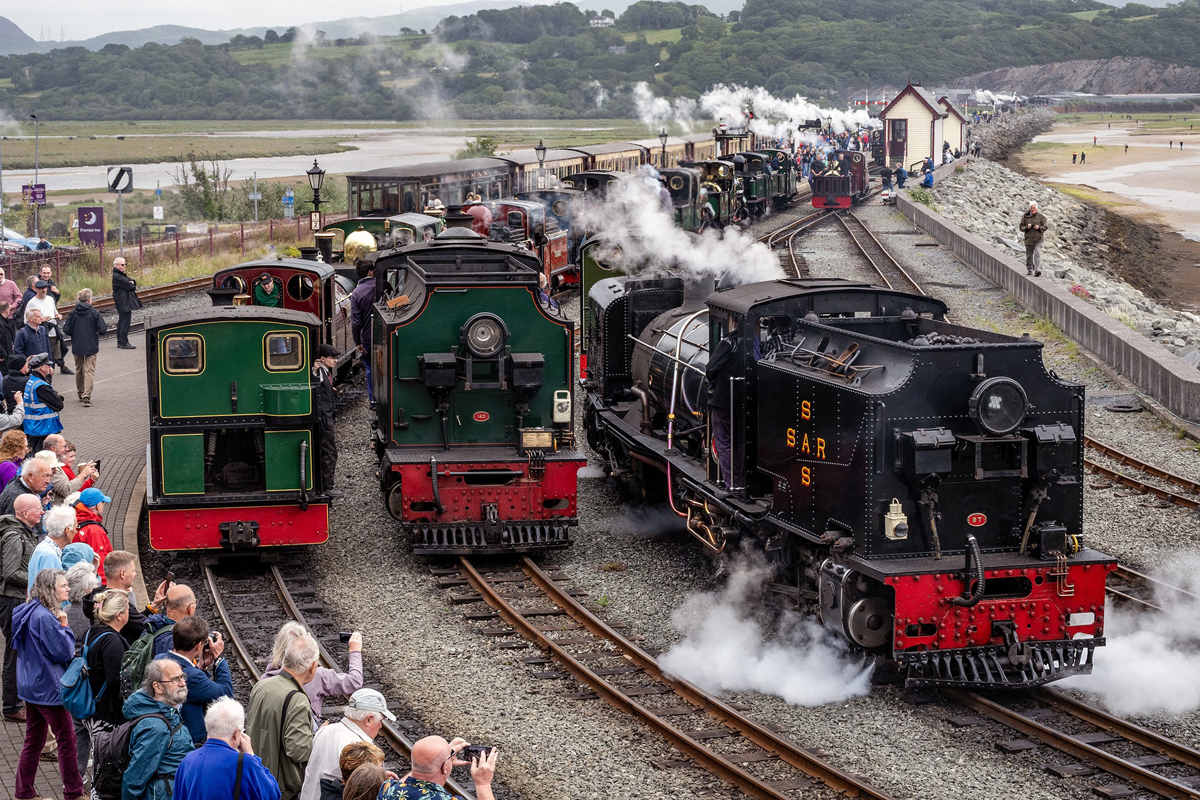
KANSAS CITY, Mo. — Amtrak and BNSF Railway have filed suit against the company that owns the dump truck involved in Monday’s fatal collision and derailment of the Southwest Chief — and the widow of the truck driver has sued a BNSF employee and the county where the accident occurred.
KCTV reports Amtrak and BNSF have filed suit against MS Contracting in U.S. District Court for the Eastern District of Missouri, Northern Division. Billy Barton II was driver of the truck owned by MS Contracting of Brookfield, Mo., when it was struck by the Southwest Chief at a grade crossing near Mendon, Mo., derailing the train and killing Barton and three Amtrak passengers.
The eight-page complaint filed Thursday alleges the truck failed to yield the right-of-way to the train “despite the fact it was unsafe, careless and reckless to do so because of the clearly visible approaching Amtrak Train 4,” and that the company was negligent in 20 different ways involving operation of the truck. It says Amtrak and BNSF each suffered more than $75,000 in damages. (The $75,000 figure is the threshold for the case to be in the jurisdiction of the federal court.) In Amtrak’s case, this relates to damage to equipment, labor costs, delays and disruption to service, and other losses; for BNSF, the host railroad for the Southwest Chief route, it includes labor costs, delays and disruption to service, costs of responding to the collision, and other losses. The companies request a jury trial.
Meanwhile, KSHB-TV reports Erin Barton has filed a wrongful death suit in Chariton County, Mo., Circuit Court. That suit names as defendants a BNSF roadmaster in charge of the tracks where the accident occurred, as well as Chariton County. It alleges the BNSF supervisor should have known the crossing represented “a grave danger” because of the nature of the crossing and vegetation that obstructed views around the crossing, and that the county should have known the crossing was in “dangerous condition.”
— Updated at 12:45 p.m. CDT with additional details from Amtrak and BNSF suit; updated at 9:20 p.m. to explain significance of $75,000 damage figure.














Just a thought, but on ungated, uncrossing signal RxR crossings, why not require the addition of directional parabolic mirrors? So a driver approaching a crossing can see down the line if the view is blocked or obstructed.
Ya ever seen all the bullet holes in signs out in the country? Can you make these fancy mirrors out of steel? Probably not.
In my experience as an engineer I’d bet the farm the driver was trying to beat the train. I’d also ask how many times this driver has driven this route.
Alan, Those ” planks” are standard crossing materials. They are formed concrete panels designed to be strong and spread the weight of highway/road vehicle across the track structure. The other boards are really thick timbers picked up by MOW people to put in a temporary crossing quickly.
The picture above shows planks on either side of the rails on which the train was traveling. Are they there to preserve any marks left on the rail(s)? I see none between the rails on the other track. Have they been removed or was there none to begin with.? What are those boards for near the north cross buck?.
Gerald/Walter….think about it. Note all these pictures are aerial views. We didn’t know how steep the grade was on approach. Not obvious. If you were close even to a small bush….. looking miles beyond on the other side of the bush, nothing seen, unless it was an airplane.
MOW manager needs to survey his territory as viewed from the rail and spot where cars cannot be seem on approach. In the name of safety, there needs to be more than normal vegetation clearance, bushes and/or trees. endmrw0701221306
Every article I see about this crash say the truck hit the truck. Looking at this photo of the intersection I am more inclined to agree with the idea posted earlier this week the truck hit the train ether at the rear of the first unit or the second unit. Notice that the entire truck appears to have been pushed aside by the train. It was pointed out in the earlier comment the poster there did not see any damage to the front of the lead unit. Also, there are crossbucks and stop signs on both sides of the track. Wouldn’t having the tracks at a higher elevation make trains more visible?
In the article posted to Newswire June 29th, entitled “Southwest Chief was traveling at 87 mph at time of collision” you can see the nose of the lead loco is smashed in pretty badly.
I did ask the question earlier this week on who hit who but in a recent photo shown here, it is obvious the loco hit the truck and by the damage to the truck he almost made it across the tracks by the damage to the frame at the rear of the truck.
Again, condolences to all who lost their lives, another senseless collision that didn’t need to happen.
There was a picture posted somewhere yesterday that showed the lead locomotive damaged on the left front nose from the impact. Makes me pretty sure the train hit the truck almost head on.
How many accidents are there at road junctions and crossroads – they typically have no protection of any kind?
I do see a stop sign though. I If my gps navigator can tell me of current traffic congestion as I travel I-20, why could not this software also tell of approaching trains at crossings? Maybe even remotely activate warning signals.
Walter, As with many road/rail intersections, the rail is on a higher plain than vehicle roadway. Thus creating a hill that must be climbed to get a “level-plain” view of rail traffic. Even the NTSB mentioned this as a probable reason the driver had difficulty making a safe passage. endmrw0701220935
Yes Mr Woodside. The article did say that there was an up hill grade approaching the crossing that made it hard to see the approaching train. But the part about the vegetation is a little bit of a stretch.
BNSF and Amtrak are not responsible for the crossing. Cross-bucks, gates, etc. are considered highway signage and not railway signals and according to the law the Federal Highway Administration is the responsible party. The states, Missouri in this case, submits requests for crossing improvements to FHA and, if and when money is available, FHA forwards the funds to the state for the crossing in question at the project price quoted. That’s the law. The railroad has no part in this until the project is selected.
Scott
Yes Mr McFarlane where is the vegetation? From the picture shown all I can see is some small scrub bushes. I don’t see anything blocking ones line of site unless your planing just to blow across the crossing at speed.
For what it’s worth, there is a local road I traverse every day to access a state highway. I have to turn right at the intersection. The angle is about 115-120 degrees. I cannot see traffic coming at me on the state highway unless I first turn left to face it more directly, then make my right. This road-rail crossing looks to be about the same angle. If I once forget to do this, I might not be able to post to Trains Newswire any longer.
GEORGE —- Good point. You know more about intersection design than the highway departments in approximately 49 states.
The standard on Wisconsin highways is to come into a Stop or Yield between 70 degrees (minimum) to 90 degrees. Other states, good luck. As an older driver, I wouldn’t live anywhere but where I do. Our Wisconsin freeways are nothing to brag about, but we pay more attention to intersections that the other states, because that’s where the safety problems occur.
Unfortunately, I drive a lot in other states. They may have better freeways than Wisconsin. But they don’t know the first thing about intersection design from the moment the freeway ramp off-ramp terminates at the cross street.
I always have a great laugh (i.e. graveyard humor) when my Wisconsin-born wife goes with me to the Old Sod which is Norfolk County, Massachusetts. I tell her I drove on this road in Drivers Ed in 1962 and it hasn’t changed since.
Umm…what vegetation, I see no vegetation near the crossing.
The forward facing camera in the lead locomotive will tell a lot….did the truck seem to slow down, but not stop? Or did the truck do a rolling stop? Or did the truck completely stop, and then proceed? Or did the truck appear to just completely run the crossing at speed? These are going to be the critical points of any lawsuit. I am saddened that there were lives lost. My condolences to all involved.
My understanding is, in Florida, FL DOT is responsible for researching need, mandating and funding all public crossings. Believe the railroad is responsible for maintaining the crossings. The railroad ROW is sacrosanct. Not sure if all states or jurisdictions are the same parameters. Open to comment or correction on this.
This was determined in Canada to be an issue several years ago and Transport Canada put together regulations to identify who is responsible for what, starting this fall and to be fully implemented by 2024, right down to the private crossings.
https://tc.canada.ca/en/rail-transportation/grade-crossings/public-grade-crossings
Just imagine how many crossings could have better protection if the money was spent on the crossings instead of lawyers (ambulance chasers)
Stop, Look , and Listen…. That’s all I have to say…
Could someone just add lights and gates please?
90 mph passenger train speed limit at an unsignalized crossing …. Santa Fe and State of Missouri did nothing about it, so now bring in the lawyers pick over the corpses …